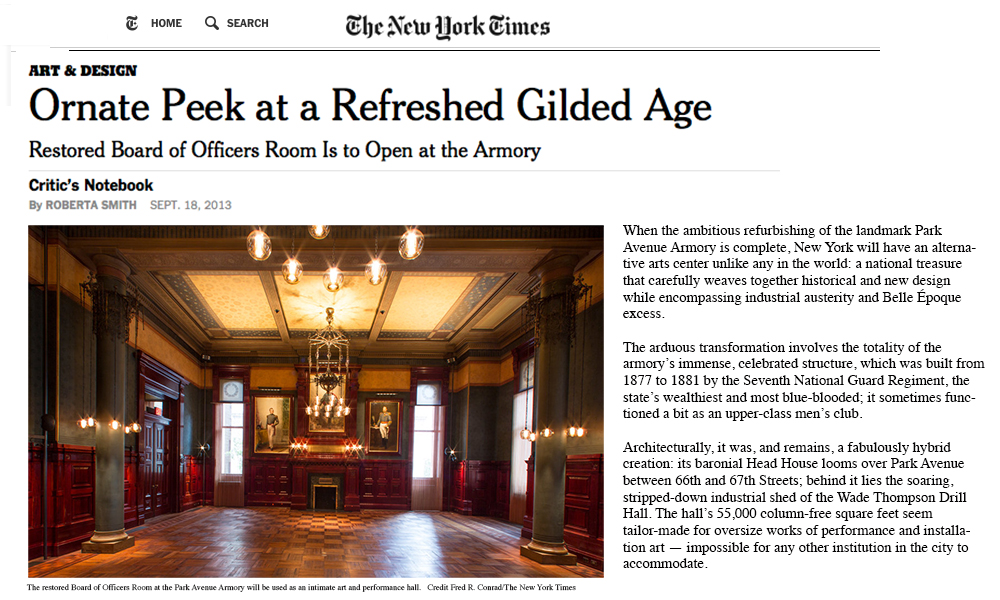“When the ambitious refurbishing of the landmark Park Avenue Armory is complete, New York will have an alternative arts center unlike any in the world: a national treasure that carefully weaves together historical and new design while encompassing industrial austerity and Belle Époque excess.
Architecturally, it was, and remains, a fabulously hybrid creation: its baronial Head House looms over Park Avenue between 66th and 67th Streets; behind it lies the soaring, stripped-down industrial shed of the Wade Thompson Drill Hall. The hall’s 55,000 column-free square feet seem tailor-made for oversize works of performance and installation art — impossible for any other institution in the city to accommodate.
The armory restoration, budgeted at $200 million, with $120 million spent, is being led by the innovative Swiss architects Jacques Herzog and Pierre de Meuron of Herzog & de Meuron, best known for converting a sprawling London power station into the Tate Modern. They and their team have been either studying or working on the building for seven years, and plans call for a 2018 completion. It is not easy to turn a grand but crumbling pile that descended to the World Monuments Fund’s list of the world’s 100 most endangered structures in 2000, into a fully functioning cultural entity that also reveals a good bit of its own physical history.
The current restoration is being overseen by Ascan Mergenthaler, a Herzog & de Meuron partner, in concert with the New York architect Charles Platt, of Platt Bayard Dovell White Architects; the Conservancy staff; and an extensive team of restorers and skilled artisans. Until now, the improvements have been elaborate yet largely invisible upgrades to the Drill Hall, including air-conditioning, new windows, increased electrical power and reinforced structural support.”
–The New York Times

